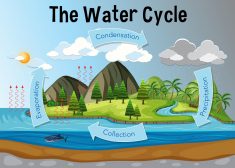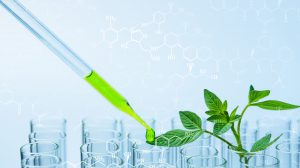
Non-sustainability
n., plural: non-sustainabilities
/nɒn-səˌsteɪnəˈbɪlɪti/
Definition: The inability of an ecological system or practice to endure without causing ecological harm or resource depletion
Table of Contents
Non-Sustainability Definition
Non-sustainability is the state in which human consumption or activities exceed the ability of the ecosystem to replenish over time, thus markedly harming the ecosystem and future generations by depressing biodiversity and productivity, depleting natural resources, polluting the environment, and hindering the pursuit of environmental and economic sustainability due to unsustainable practices.
Etymology: The term “non-sustainability” is a compound word derived from “non-” (indicating negation) and “sustainability,” which is a blend of “sustain” and “ability.”
Synonym: unsustainability; environmental unsoundness; ecological instability
Compare: sustainability
What is Sustainability? (By Mocomi Kids):
Causes Of Non-Sustainability
Non-sustainability is often associated with human activities. Examples of such human activities that are unsustainable practices are the unbridled use of fossil fuels, deforestation, and the disposal of non-biodegradable waste, like plastic straws and bags.
Rapid population growth could mean increased consumption patterns. The problem arises when the amplified consumption leads to overexploitation and depletion of natural or environmental resources coupled with environmental degradation.
- Fossil fuels and non-renewable minerals are limited resources. When these finite resources are depleted, the common future generations may have to deal with the subsequent limitation in accessing these essential resources.
- Pollution is a significant factor in environmental degradation. Greenhouse gases (e.g., methane, carbon dioxide, and industrial gases) have contributed significantly to polluting the atmosphere, contributing to climate change, and disrupting ecosystems and weather patterns. Pollutants in the water bodies lead to contamination and harm aquatic life, further undermining environmental sustainability.
NOTE IT!
Non-sustainability is primarily driven by two factors: first, excessive reliance on finite resources, e.g., natural gas, for economic growth while overlooking corporate social responsibility; second, neglecting the pursuit of sustainability so as to meet own needs while compromising the ability of future generations to meet their needs.
Effects Of Non-Sustainability
What are the general effects of non-sustainability?
- Ecosystem degradation: non-sustainable practices may lead to natural habitat disruption.
- Biodiversity loss: non-sustainability could be associated with biodiversity loss. When habitats are disrupted, this could reduce the ability to support diverse species.
- Ecological imbalance: non-sustainability could impact the ecological balance of nature, such as the manifestation of climate change, rising sea levels, and disruptions to ecosystems.
Solutions And Mitigation
Here are some of the ways to achieve sustainable development:
- Sustainable practices: transitioning to more sustainable practices, e.g. promoting renewable resources, like solar power, reducing food waste, recycling wastes, and adopting environmentally friendly technologies
- Environmental policies: addressing non-sustainability through the development and implementation of environmental policies for efficient environmental protection, e.g. policies in regulating emissions
- Conservation efforts: initiatives are taken to protect endangered species, conserving biodiversity, and protecting natural resources
NOTE IT!
Research studies in searching for sustainable solutions shed light on the plausibility of reducing reliance on non-sustainable practices, such as by embracing renewable energy sources, particularly solar power, over the excessive reliance on fossil fuel. These efforts are crucial to promote helpful information that could foster sustainable development for the well-being of human rights of both current and future generations.
References
- Smith, J. (2022). “Evaluating Non-Sustainability in Agriculture: A Case Study.” Journal of Environmental Biology, 45(3), 321-335.
- Brown, A. L. (2020). “Assessing Non-Sustainability in Urban Development: A Review.” Sustainability Science, 12(5), 741-758.
- Meadows, D. H., Meadows, D. L., & Randers, J. (1972). “The Limits to Growth: A Report for the Club of Rome’s Project on the Predicament of Mankind.” New American Library.
- Ehrlich, P. R., & Ehrlich, A. H. (1990). “The Population Explosion.” Simon & Schuster.
©BiologyOnline.com. Content provided and moderated by Biology Online Editors.





